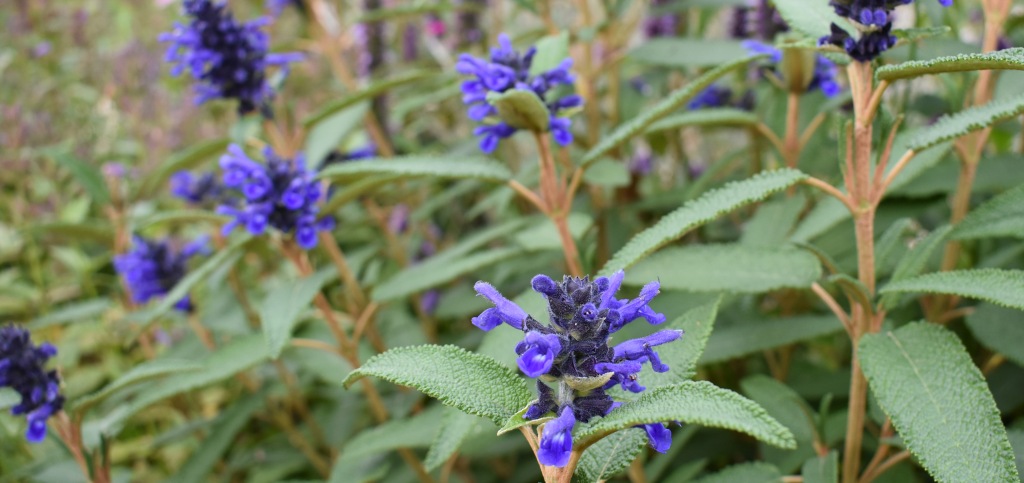
Mid-September and the days are balmy and delicious. In the garden the salvias continue to shine, the later flowering Salvia corrugata catching attention with its dark green corrugated leaves, its rusty tomentose stems, and it glorious blue flowers. Nosing around the internet I find an interesting story regarding its introduction. Jim Archibald, a Scot, started his gardening career at Jack Drake’s nursery at Inshriach near Aviemore. Moving south he became an important plant collector and nurseryman working with his second wife, Jenny, with whom he eventually established a famous garden in Wales. The couple collected plants from Europe, Turkey, North Africa, USA, and South America – mostly concentrating on alpines. One story says they were in the Andes in 1988 (not all accounts agree on the date) and gave herbarium specimens of Salvia corrugata to The Royal Botanic Garden Edinburgh. Some years later John Compton was inspecting the specimens when a few seeds fell out and he decided to plant them as an experiment. It is said that all the plants in cultivation in Britain have come from these few seeds. This salvia will cope with light frosts, but Joanna has a line or two of cuttings coming on nicely in the glasshouses for next year. In addition a group of pots containing some of this year’s plants are overwintering in the broadspan glasshouse. In its natural environment high up in the Andes Salvia corrugata can grow to three metres, so maybe we’ll have a salvia shrub to boast about next year. It’s puzzling that it survives in its hostile native environment, but not here. I suppose it is the cold wet soils of Scotland that shorten its life.
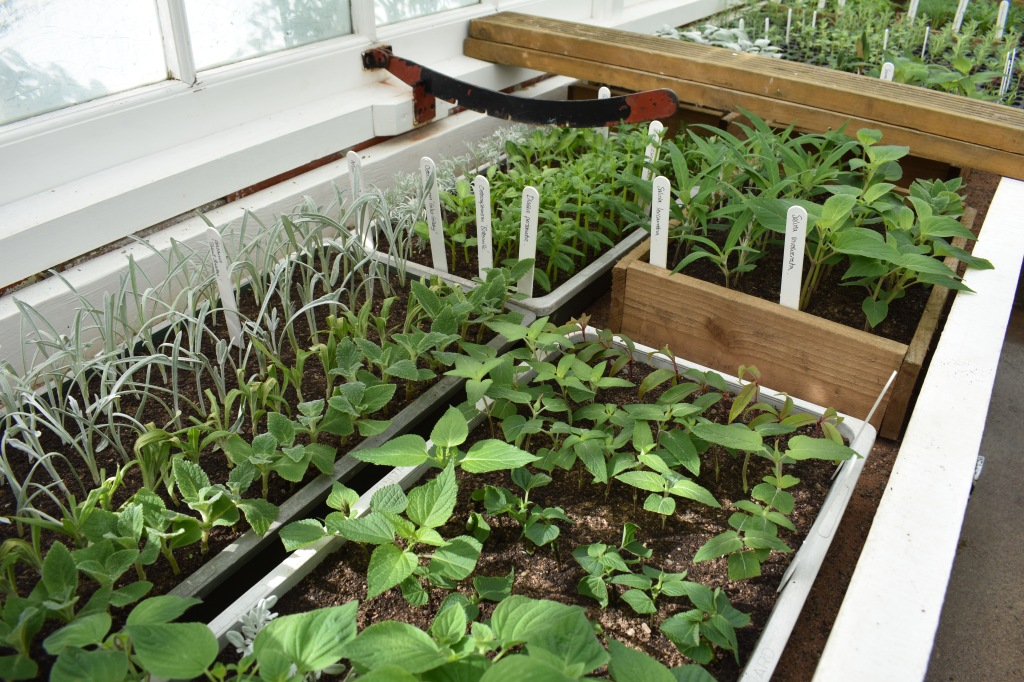
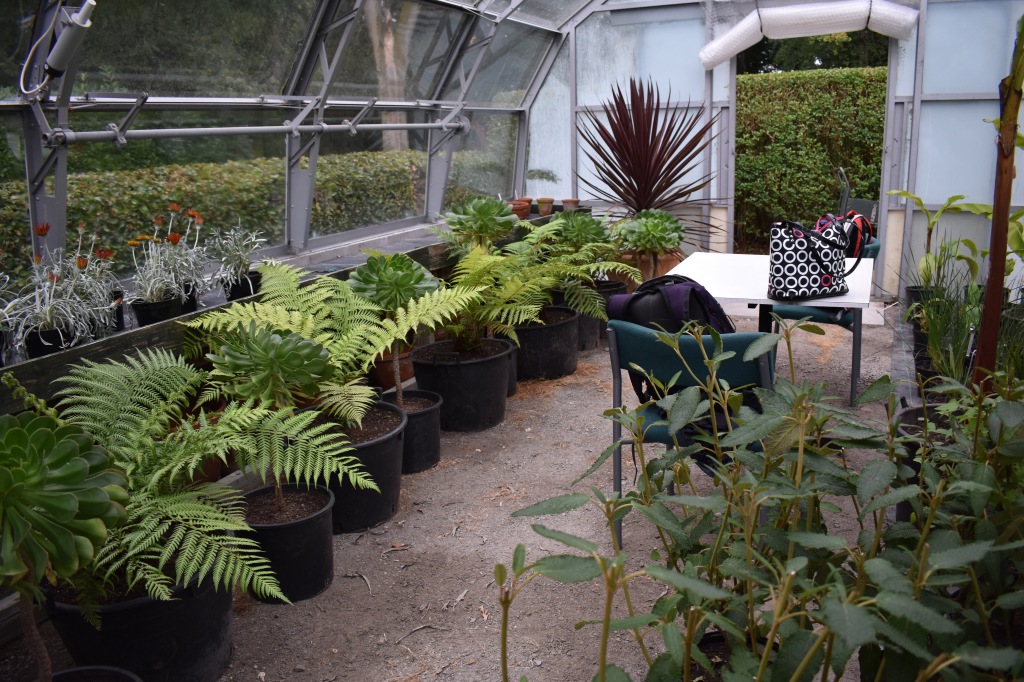
The other salvia I linger beside is the pink Salvia involucrata on which I espy a cheating bee. The bee’s tongue is not long enough to enter through the mouth of the flower and it has found a hole, made previously by another bee/insect, through which it can get its fill of the nectar.
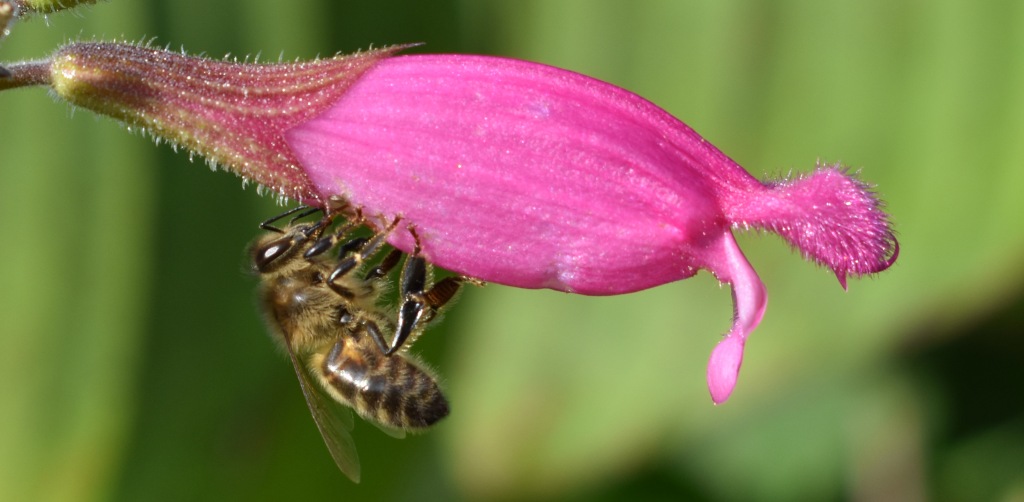
Last week the garden seemed short of insects, but on this day (15 September) there is a real hum of activity. Despite the late summer warmth, the gardeners are thinking ahead and are wary of the frosts that might hit at any time. James is lifting the precious tree ferns that were planted in the Evolution Garden. The bananas next to the tree ferns will be left to take their chance because there is not enough room in the glasshouses to cope with all the tender plants. The cycads have already been removed and Tim is lifting aeoniums in the Four Squares. Volunteer Steve is in today and his task is weeding – today removing a good few errant sow thistles.
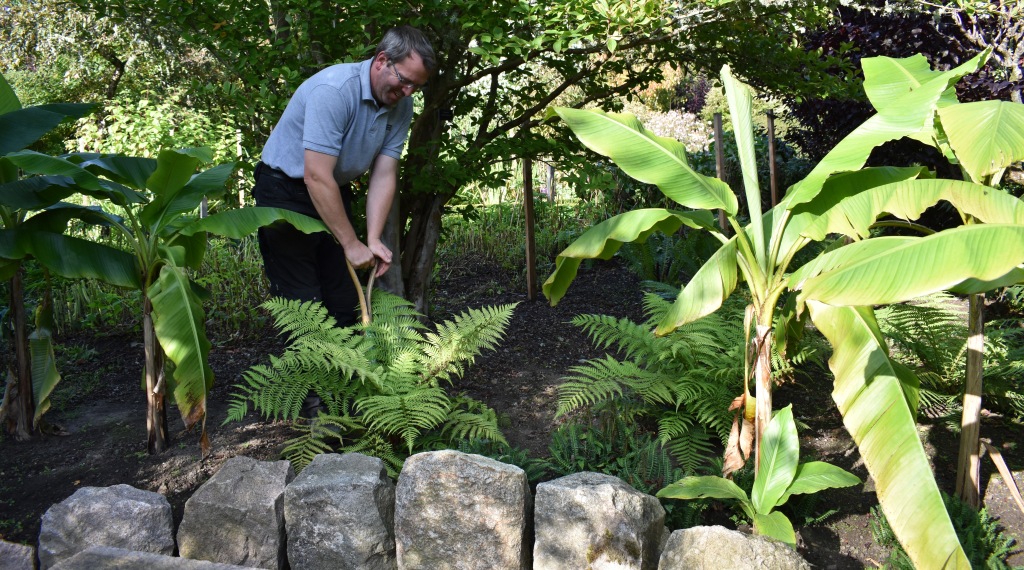
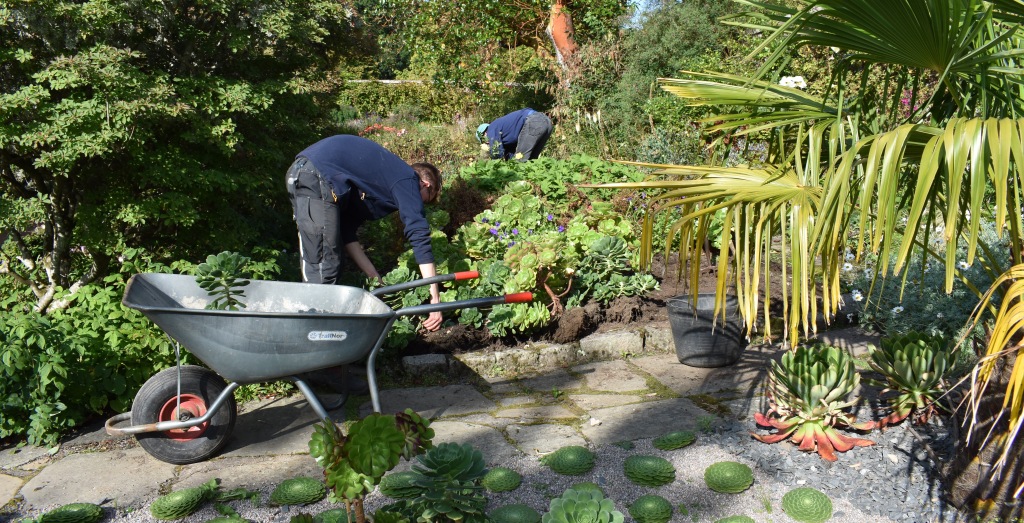
A week later (22 September) I need my gloves as the autumn nip is in the air. When Sheila and Alison continue Steve’s job they disturb a fat toad amongst the weeds.
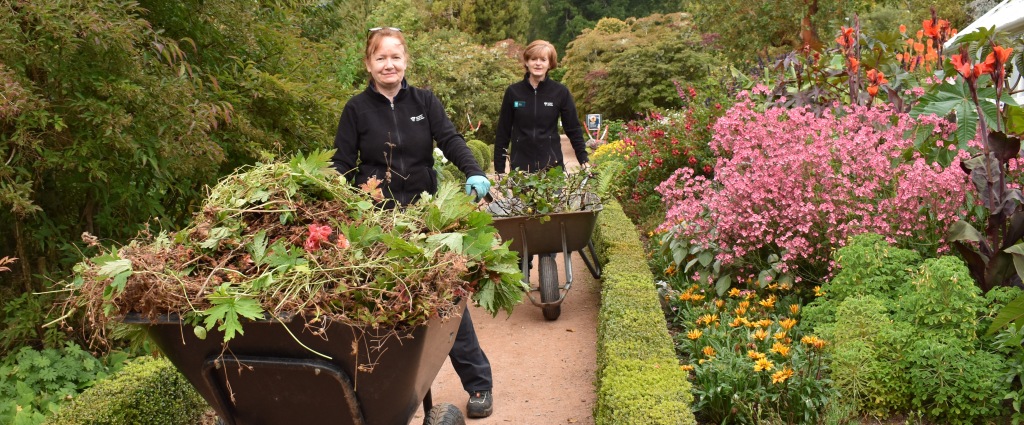
Much of the Evolution Garden is taken over by a riot of Cosmos bipinnatus ‘Dazzler’, Ammi visnaga ‘Green Mist’ and Nicandra physalodes. As James predicts I love the jungle effect.
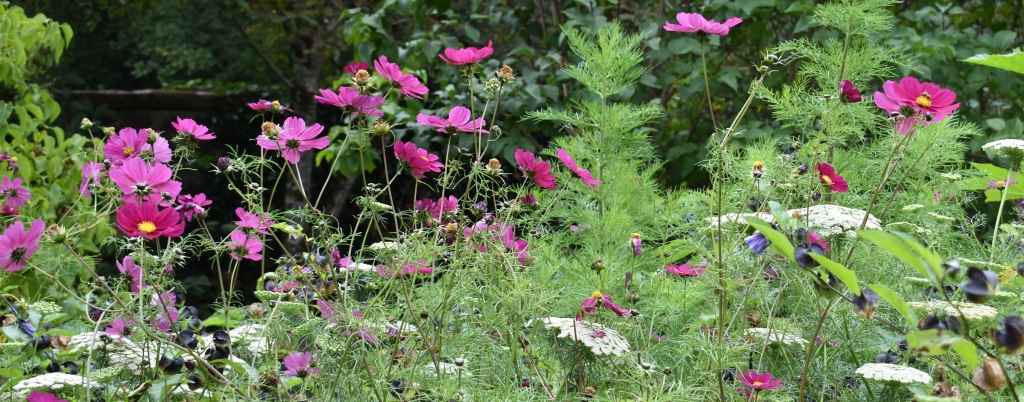
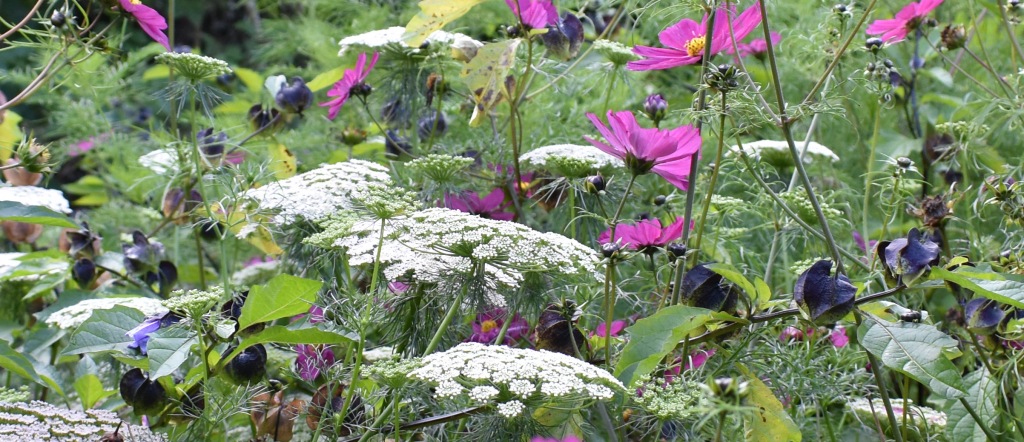
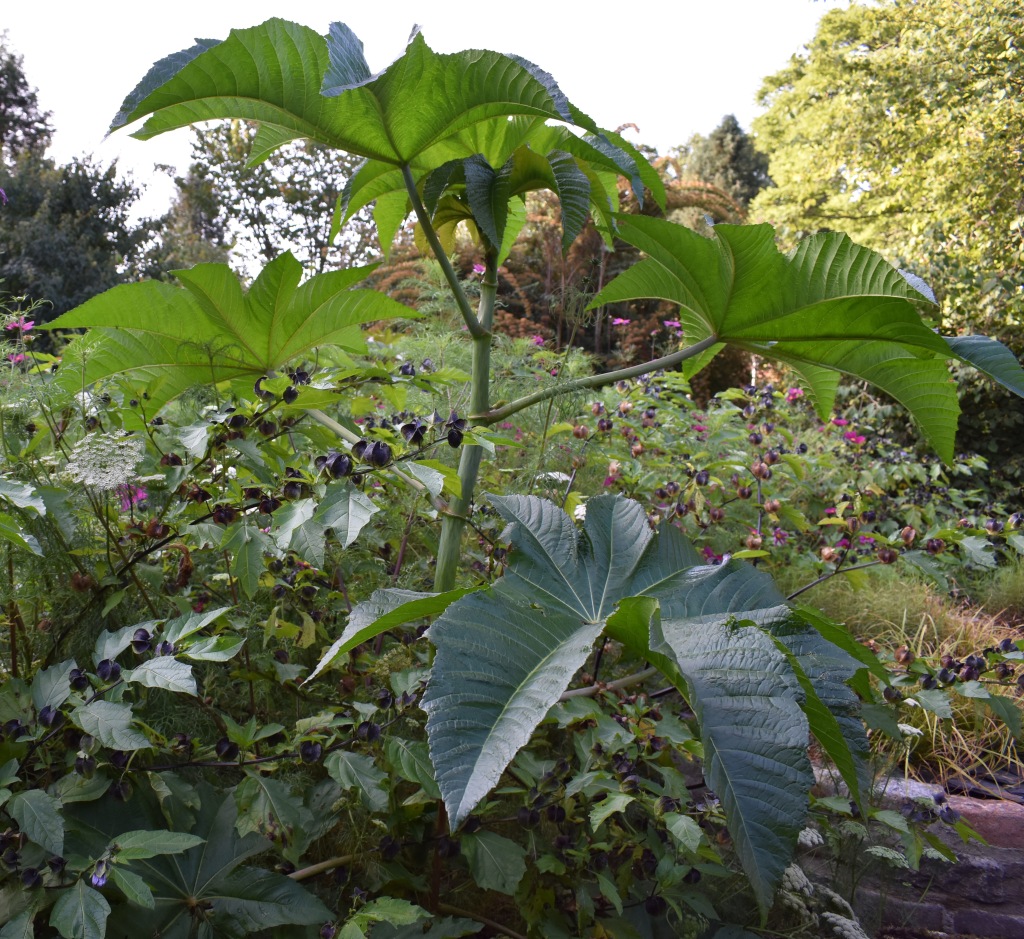
Suitably jungly and towering above the other plants is Ricinus zanzibarensis. It was grown from last year’s seed, but is too big to accommodate in the glasshouses and will likely die off with the frosts. It’s quite remarkable that one of the seeds lying on the potting shed bench in January has produced this plant taller than me. Ricunus is the castor oil plant, but its seed coat is extremely poisonous and hands should be washed after collecting the seeds.
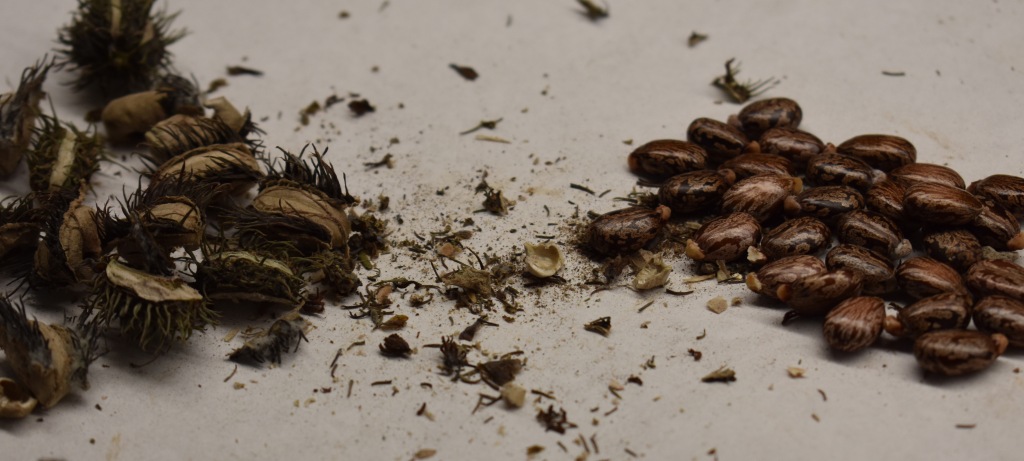
The plans for the Evolution Garden had to be put on hold this year and the ‘jungle’ was more a matter of filling the space with available plants and leaving them to ‘do their thing’. I love the ‘jungle’, but look forward to seeing the execution of the original design – each circular bed representing a different period of plant evolution. James has been trimming back the jungle to make the garden accessible for visitors.
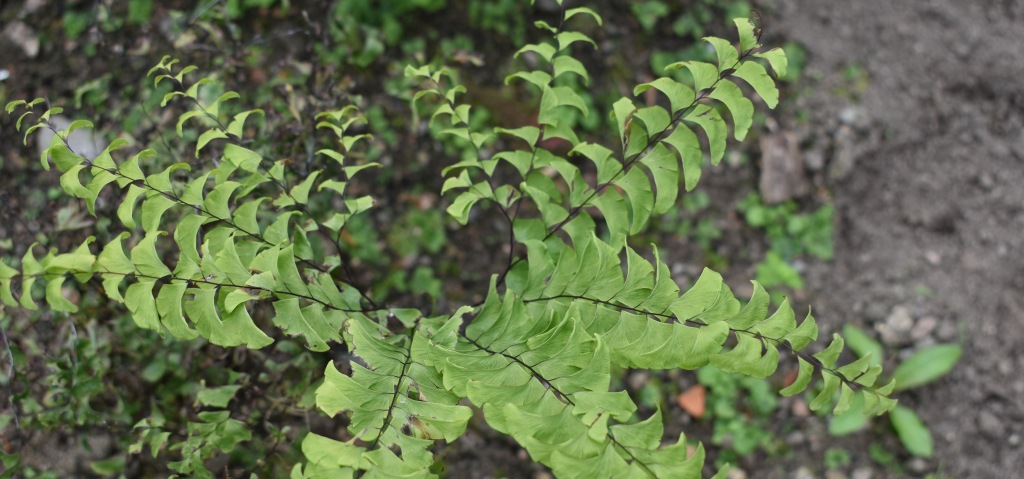
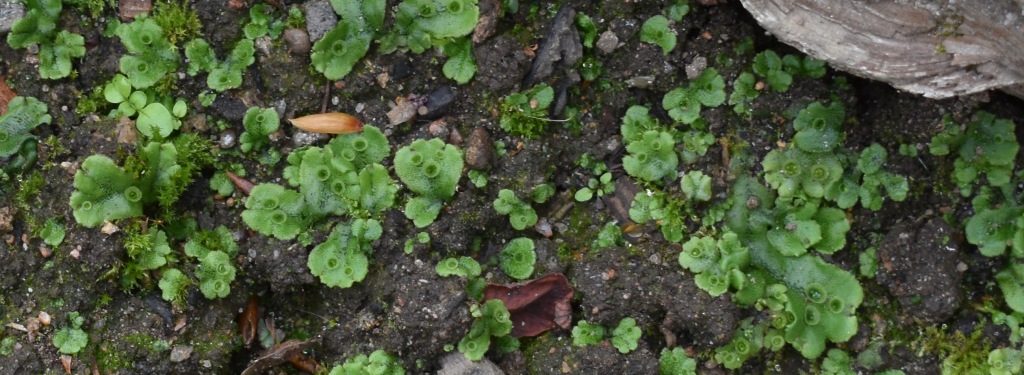
The Ricinus that grow beside the glasshouses are not so tall – some will be taken in for the winter. The bronze Ricinus communis by the glasshouse work well with the bronze cannas.

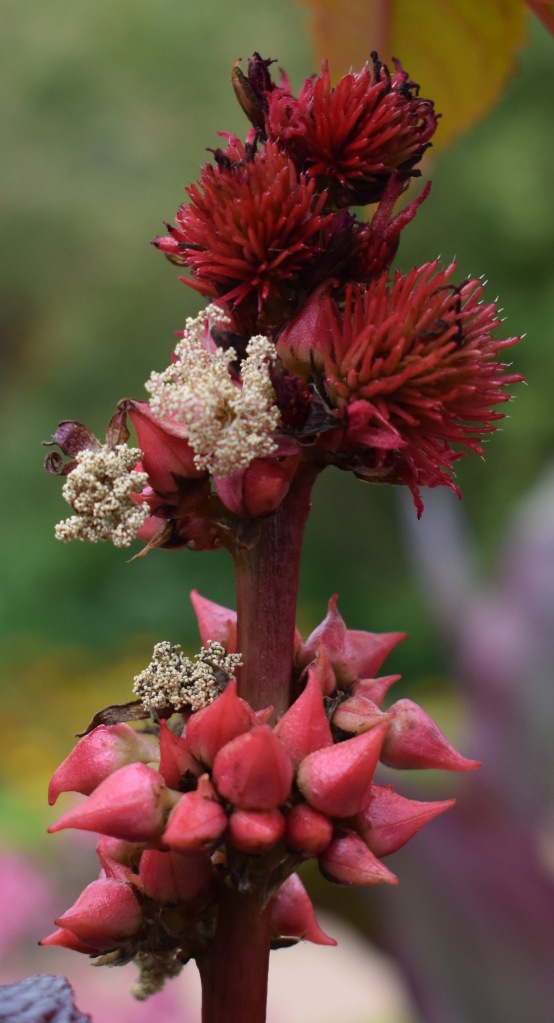
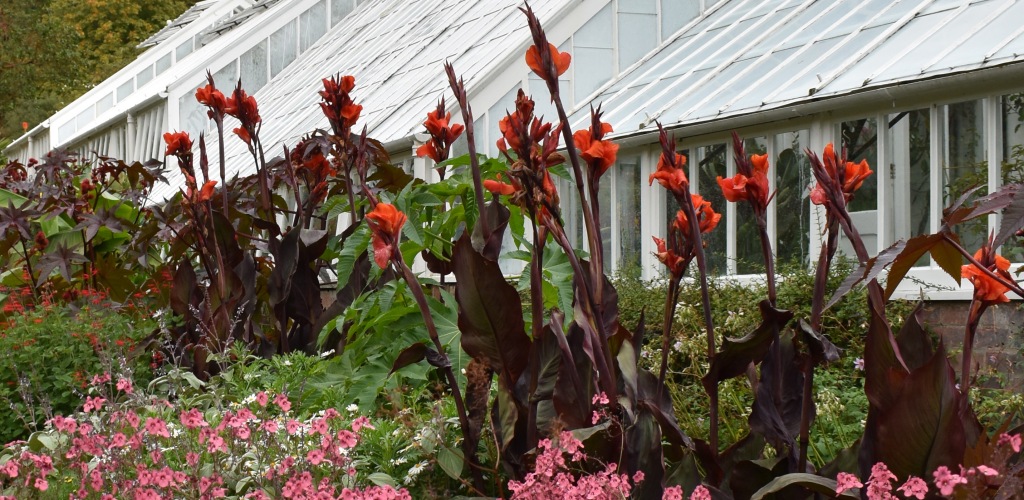
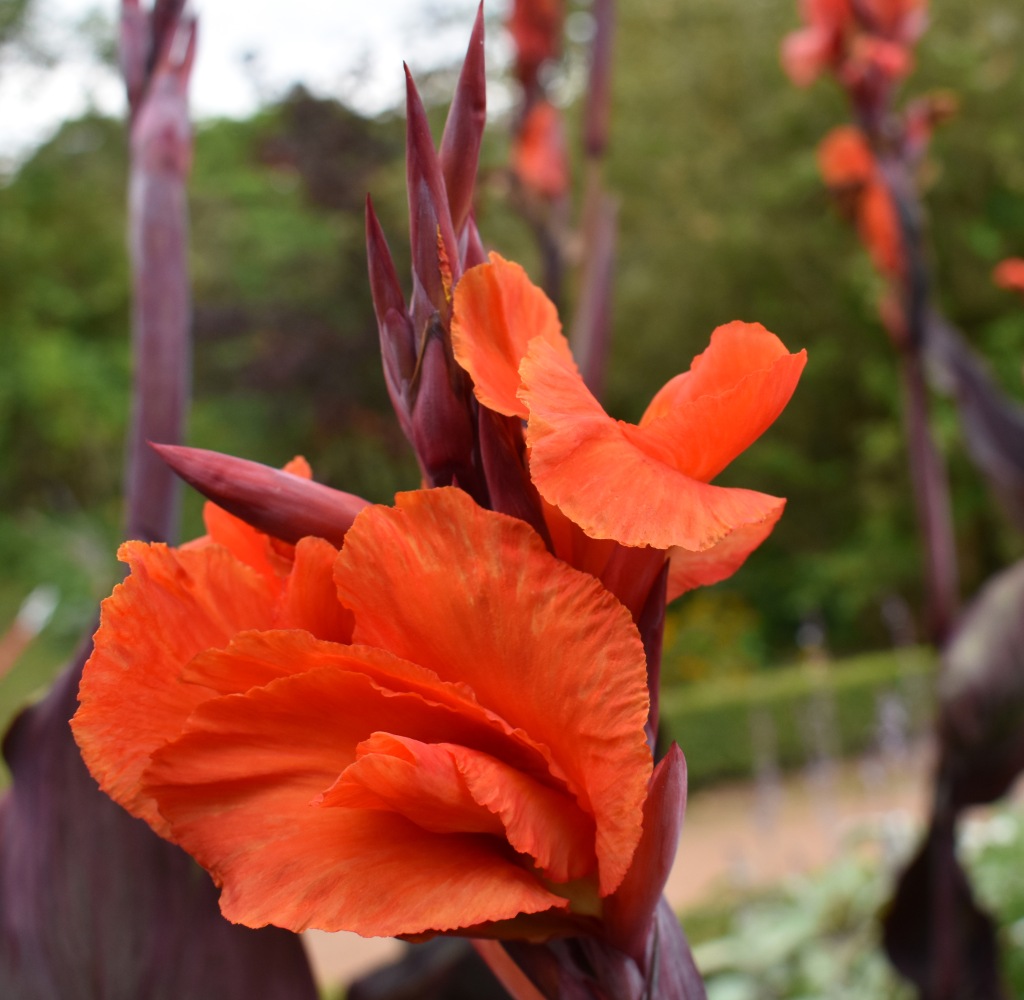
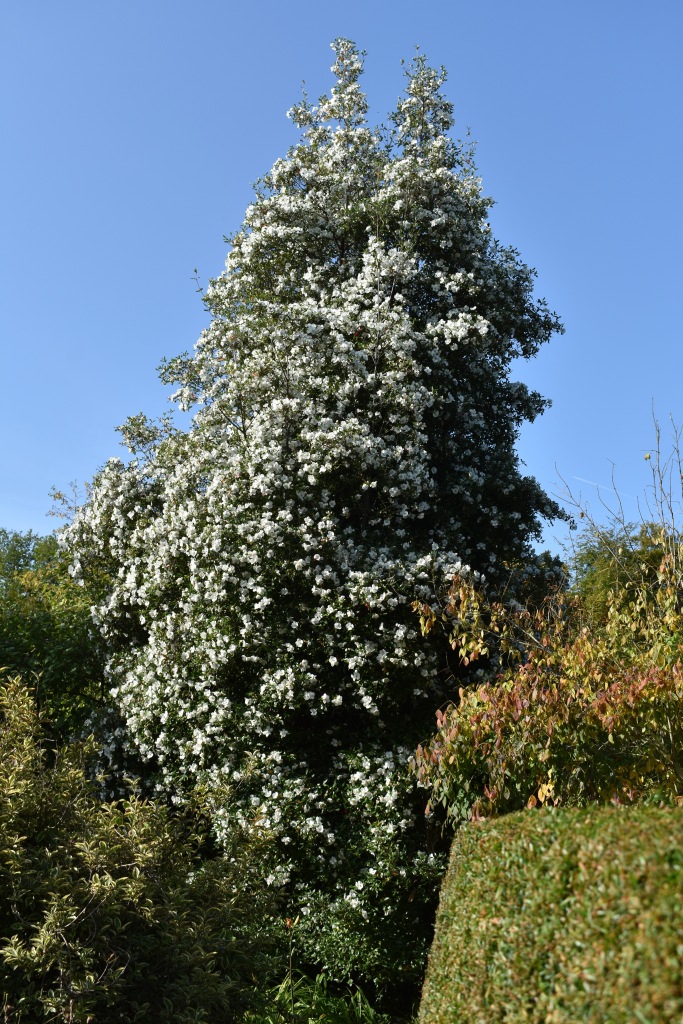
Whilst most eucryphias are over, the Eucryphia ‘Rostrevor’ on the Double Shrub Border is looking splendid. It is a cross between the Chilean E. glutinosa and Australian E. lucida that arose at the Rostrevor garden in Northern Ireland. E. glutinosa is deciduous at Crathes and the leaves are serrated, but E. ‘Rostrevor’ is evergreen with no serrations.
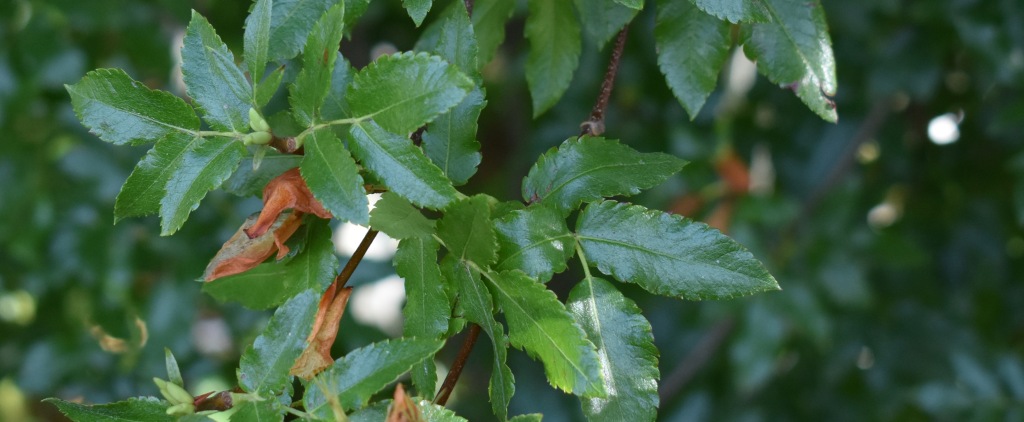
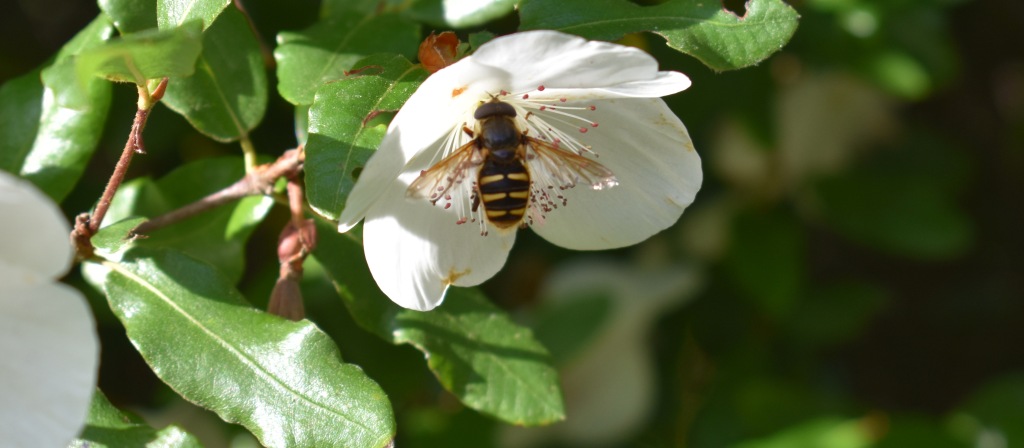
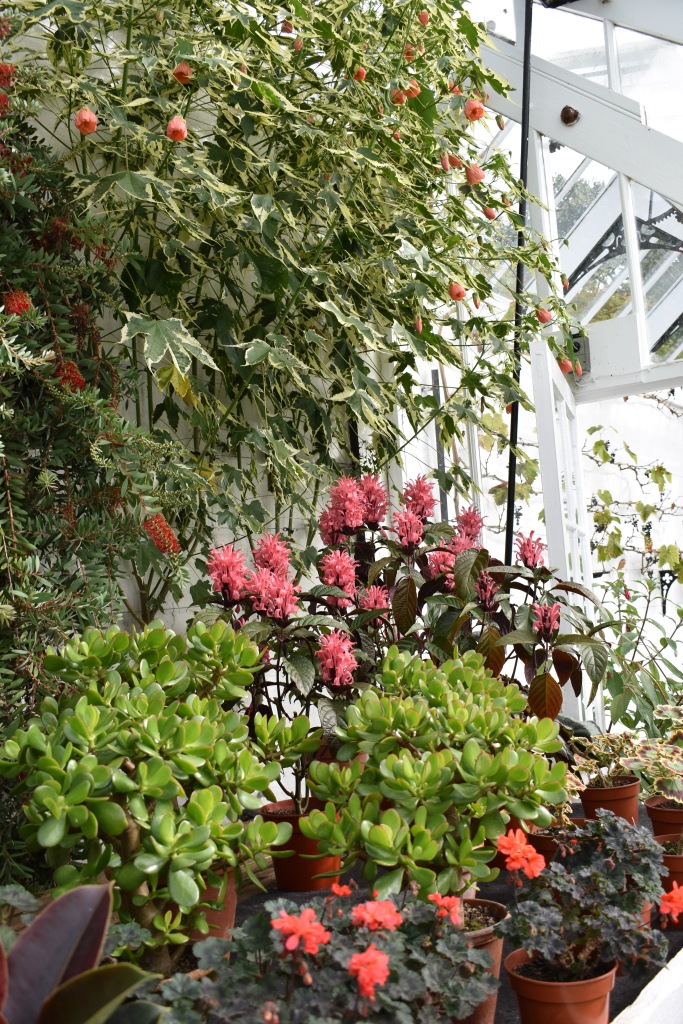
It’s a shame that people cannot visit the glasshouses just now to see the show houses. Justicia carnea – Brazilian plume flower or flamingo flower – is taking pride of place. It looks particularly good in front of the variegated Abutilon savitzii.
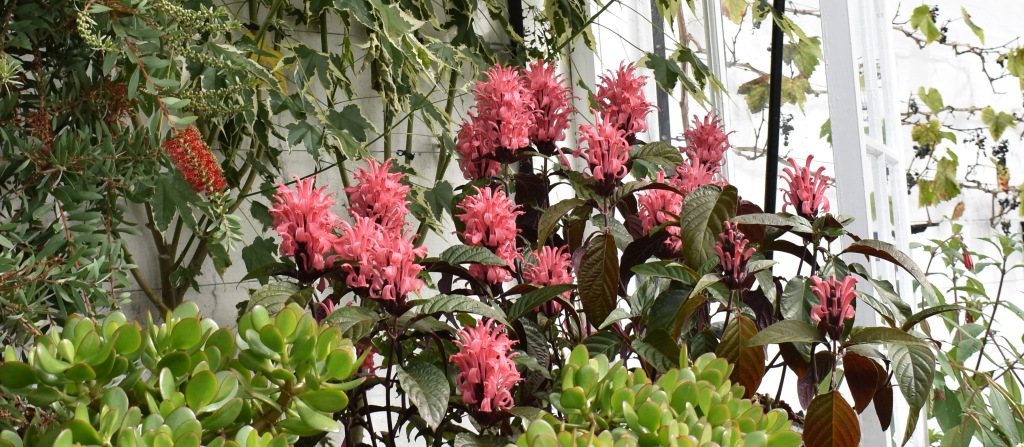
Just outside the glasshouses the fine Kniphofia nobilis which contrasts nicely with the re-sprouting eucalyptus tree. There a couple of delicate kniphofias in the Upper Pool Garden whose names I don’t know. The long established K. caulescens that grows in the gravel is only just beginning to flower. It is a welcome October stalwart.
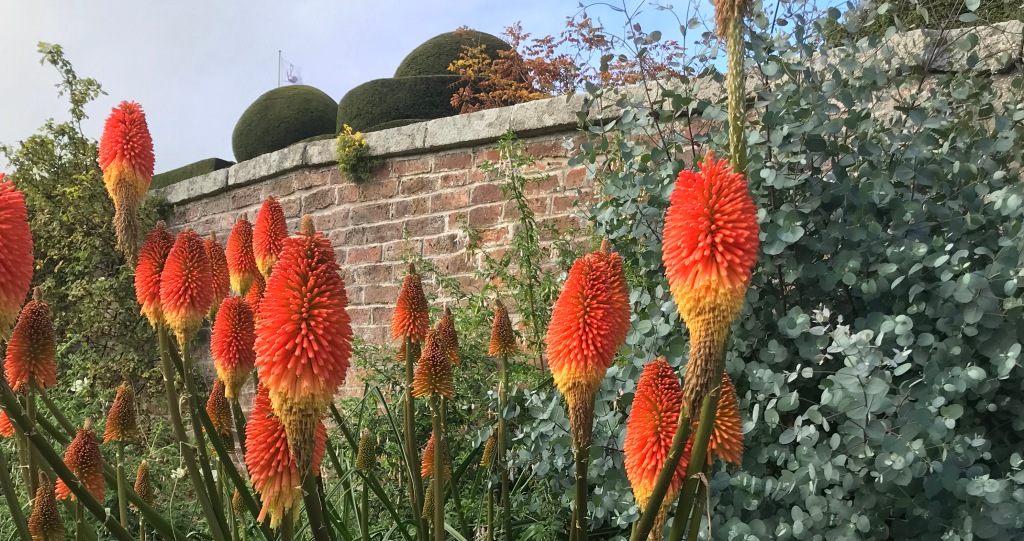
I smell the Cimifuga simplex (synonym Actaea simplex) before I see it. The scent is extremely powerful and attracts a host of insects. It’s a striking plant on the White Border.

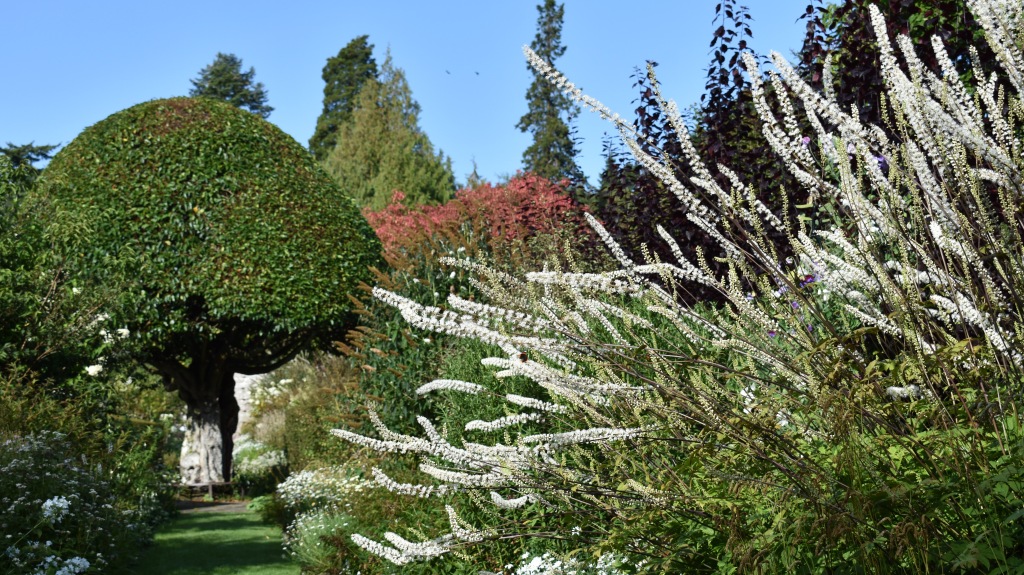
Let’s hope the frosts keep off for a while to let the garden flourish through October. As we face the winter with Covid 19 we need the weather on our side. Keep safe everyone.
Lovely! The cannas are beautiful (well, everything is…).
LikeLiked by 1 person
Thank you once again for such a positive and informative article! I’ve finally been able to solve a query – a tree which we much admired elsewhere, a couple of years ago has, thank to your photographs, been identified – Eucryphia – which is stunning! Gardens are so important to us, especially during these challenging times – so the all the work in caring for and in sharing this beautiful place is invaluable!
LikeLiked by 1 person
Yes Jenny, eucryphias are stunning. I didn’t know them before I came to Crathes.
LikeLike